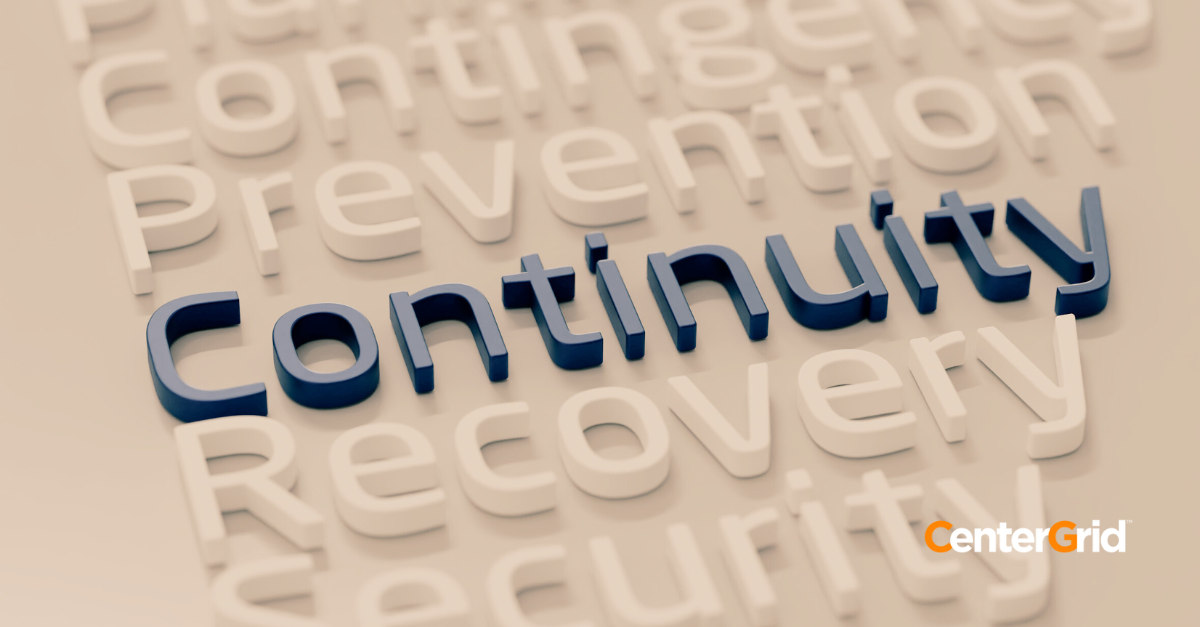When Disaster Strikes, the Cost Is More Than Just Downtime
It was just another Tuesday morning when the manufacturing CIO received the call no IT leader wants to get: their primary systems were down, and no one knew why.
In the days that followed, it became clear – a sophisticated ransomware attack had not only encrypted production systems but had also compromised their backup server.
What should have been a straightforward recovery turned into a weeks-long nightmare, costing the company millions in lost productivity and damaged customer relationships.
This story isn’t unique, but it illustrates why the days of disaster recovery being limited to fire, flood, and physical damage are long gone. Today’s businesses face sophisticated cyber threats, infrastructure failures, supply chain disruptions, and yes, global pandemics.
Leaders need to understand that modern disaster recovery requires a multi-faceted approach that evolves alongside these challenges.
Let’s explore how forward-thinking organizations are reimagining their disaster recovery and business continuity strategies.
The Rise of Cloud-First Disaster Recovery
The cloud has fundamentally changed how organizations approach disaster recovery, offering speed, scale, and cost-efficiency that traditional DR systems can’t match.
Gone are the days when disaster recovery meant storing tape backups in an offsite location.
Cloud-based DR solutions enable:
- Rapid recovery options with significantly reduced capital expenses
- Geographic redundancy without requiring multiple physical data centers.
- Sophisticated recovery strategies that were once accessible only to enterprise-level organizations with massive budgets.
- Recovery capabilities that scale dynamically based on actual needs during an incident. This means you’re not paying for unused capacity during normal operations, but you have access to virtually unlimited resources when disaster strikes.
Building Zero Trust into Your Recovery Strategy
Why Backup Environments Must Be Treated Like Production Systems
The security landscape has changed dramatically, necessitating a zero-trust approach that protects recovery systems with the same vigilance as production environments.
Cybersecurity threats like ransomware have blurred the lines between security incidents and disaster scenarios. A robust disaster recovery strategy must now incorporate zero-trust security principles. This means treating both external and internal traffic as potentially hostile, implementing strict access controls, and continuously verifying every connection request.
Your backup and recovery systems should be isolated from your main network infrastructure, with separate authentication systems that cannot be compromised through the same attack vectors. Regular security testing of your DR environment is essential, as attackers increasingly target backup systems to prevent recovery from ransomware attacks.
Automating Recovery to Eliminate Human Error
The most sophisticated recovery plans can fail when manual processes introduce delays and mistakes during implementation.
Automation has become a cornerstone of effective disaster recovery, minimizing human error and dramatically reducing recovery time. By creating predefined orchestration workflows, you can ensure that complex recovery processes execute consistently every time, regardless of which team members are available during a crisis.
Modern DR platforms offer capabilities to automatically detect failures, initiate appropriate recovery procedures, and even conduct regular testing without disrupting production systems. This “DR as code” approach means that your recovery processes can be version-controlled, tested, and refined just like any other critical system.
Stop “Checkbox” Testing: Start Testing Real Life
If your disaster recovery testing is predictable and infrequent, you’re setting yourself up for failure when a real disaster strikes.
Traditional annual DR tests often devolve into checkbox exercises that don’t reflect real-world conditions. Progressive organizations are adopting chaos engineering principles, deliberately introducing failures into their systems under controlled conditions to identify weaknesses before real disasters expose them.
Regular, unannounced disaster simulations involving business stakeholders – not just IT teams – provide valuable insights into technical and organizational readiness. These tests should replicate realistic scenarios, including staff unavailability, communication challenges, and partial system failures, not just complete outages.
Business Impact Analysis 2.0
Match Recovery Priorities to Business Outcomes
Understanding the true cost of downtime across business functions is no longer optional—it’s foundational.
Traditional business impact analyses often fail to capture the complex interdependencies in modern digital operations. Today’s approach needs to be more granular and continuous. Rather than treating all systems with the same recovery objectives, tiered recovery strategies should be implemented based on actual business impact.
This requires close collaboration between IT and business units to understand not just which systems support which functions but how those functions impact customer experience, revenue generation, and regulatory compliance. With this understanding, you justify the right investments and avoid over- or under-protecting critical functions.
Virtual Workforce Continuity
The distributed nature of today’s workforce requires new approaches to ensuring operational continuity during disruptive events.
The pandemic permanently changed our thinking about workforce continuity. With remote and hybrid work models now standard, disaster recovery must account for distributed teams and the technology that supports them.
A comprehensive workforce continuity strategy includes secure remote access solutions, collaboration tools, and clear communication protocols. It should also address the human aspects of disaster recovery, including how to support employees who may be personally affected by the same disaster affecting your systems.
Resilience Is More Than Recovery. It’s a Competitive Advantage
Organizations that can recover quickly from disruptions gain a significant edge over their competitors.
Disaster recovery isn’t just about getting systems back online – it’s about building organizational resilience that becomes a competitive advantage. By embracing cloud-based DR, zero-trust security, automation, realistic testing, sophisticated impact analysis, and workforce continuity planning, you’re not just protecting your business from disasters – you’re positioning it to thrive in the face of uncertainty.
At CenterGrid, we help organizations move beyond traditional DR toward modern, cloud-first, zero-trust resilience.
Our cloud hosting and managed DRaaS solutions are built to scale, secure by design, and tailored to your business priorities.
👉 Explore our Managed DRaaS Solutions
👉 Talk to us about Cloud Migration and Resilience
Let’s build a recovery strategy that doesn’t just get you back online but keeps you ahead of whatever’s next.

